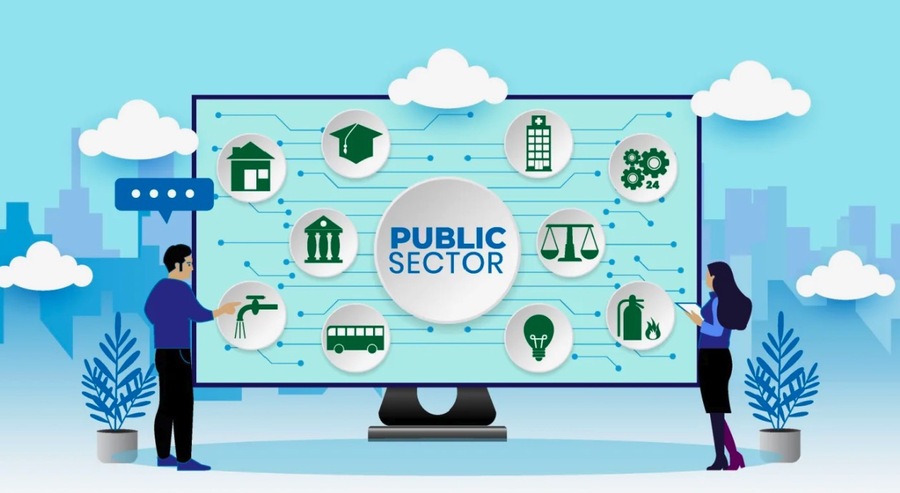In our rapidly moving world, the efficiency of government services is crucial. Citizens anticipate quick and effective service delivery, and any delays can lead to frustration and a decline in trust in public institutions. Efficient services not only boost public satisfaction but also facilitate societal development and seamless operations.
Understanding Queue Management Systems (QMS)
Queue Management Systems (QMS), alternatively called Electronic Queuing Systems or Customer Flow Management Systems, are advanced technological tools aimed at optimizing operations by streamlining the movement of individuals in service-oriented settings. By systematically organizing queues, QMS significantly diminish wait times, boost the efficiency of service delivery, and enhance the overall experience for customers. In public service sectors, these systems play a crucial role in managing substantial crowds, ensuring orderly processes, and facilitating efficient service provision.
The Importance of Effective Queue Management in Government Agencies
Common Issues
Government offices often encounter challenges such as lengthy wait times, overcrowding, and inefficient service delivery. A study by the Customer Service Institute indicates that the average wait time in government offices can exceed 45 minutes, causing significant frustration among citizens.
Impact on Public Satisfaction and Service Delivery
Long wait times and overcrowding negatively impact citizens’ satisfaction with services. A Gallup survey revealed that 68% of citizens expressed dissatisfaction due to long wait times. Efficient queue management solutions can greatly improve customer satisfaction by reducing wait times and providing a more organized service delivery process.
Historical Perspective on Queue Management
Traditional Methods
Historically, queues in public offices were managed manually. Citizens would wait in long lines, often without knowing how long they would have to wait or when their turn would come. This system was inefficient, leading to frustration and confusion.
Early Innovations
Innovations in queue management began with the advent of basic ticketing systems. These systems enabled individuals to obtain a ticket and await their turn, offering a more structured method for handling queues.
Evolution of Queue Management
As technology has advanced, queue management has evolved from manual methods to sophisticated digital solutions. Today’s modern Queue Management Systems (QMS) employ electronic systems to handle queues, providing real-time updates and greatly enhancing the efficiency of service delivery.

Types of Electronic Queuing Systems
- Ticket-Based Systems: Citizens take a ticket and wait for their number to be called.
- Digital Sign-Ins: Citizens sign in electronically and are assigned a queue position.
- Virtual Queues: Citizens can join the queue remotely through a mobile app or online portal.
Functioning of a Queue Management System
QMS streamline and optimize the queueing process through a series of coordinated steps:
- Entry Point: Customers interact with a machine to take a physical ticket, sign in at a kiosk, or join a virtual queue via a mobile app or online portal.
- Queue Assignment: The system assigns a position based on entry time or service required, informing the citizen through a display screen, printed ticket, or digital notification.
- Waiting Area: Customers wait in a designated area with real-time updates on wait time and queue position.
- Notification: When it is the citizen’s turn, the system sends a notification through various channels, such as display screens, SMS, email, or app notifications.
- Service Delivery: The customer receives the required service at the designated counter, with the system recording the interaction for analytics.
- Feedback and Exit: Post-service, the system may prompt for feedback, which is valuable for continuous service improvement.
Key Features of Modern QMS
- Automated Ticketing and Appointment Scheduling: Allows citizens to book appointments and receive tickets electronically, reducing wait times and organizing the service process.
- Real-Time Monitoring and Analytics: Provides insights into queue management, helping optimize resource allocation and improve service delivery. Offices using QMS can reduce wait times by up to 30%.
- Integration with Mobile Apps and Online Portals: Citizens can manage appointments and queue status remotely, with over 70% preferring mobile apps for queue management.
- Multi-Channel Notifications: Keeps citizens informed about their queue status through SMS, email, and app notifications, reducing physical waiting.
- Customization and Flexibility: Modern QMS are customizable to meet specific needs, crucial for different departments and services.
Benefits of Implementing QMS in Government Sectors
Reduced Wait Times
Organizing queues and optimizing service delivery reduces wait times, making the process more efficient. Studies show QMS can reduce wait times by up to 50%.
Improved Public Satisfaction
Enhanced service processes increase citizens’ satisfaction, with surveys indicating 85% are more satisfied with services using QMS.
Streamlined Operations
Optimizes resource allocation and staff productivity, enabling more efficient operations. Staff productivity can increase by 25% with QMS implementation.
Data-Driven Decision Making
Provides valuable data for planning and service improvement, leading to a 20% improvement in service efficiency.
Enhancing Accessibility and Inclusivity
Designing QMS for People with Disabilities
QMS can be designed to cater to people with disabilities, ensuring accessibility for all citizens with features such as voice commands and easy-to-read screens.
Language Support and Multilingual Interfaces
Offering language support and multilingual interfaces makes it easier for citizens speaking different languages to access services, crucial in diverse regions like Dubai, where over 85% of the population are expatriates.
Ensuring Access for Elderly Citizens
QMS can be designed for elderly citizens and those with limited technological proficiency, providing a convenient and user-friendly service experience.
Integration with Existing Systems
- Compatibility with Legacy Systems: Modern QMS are compatible with legacy systems, ensuring seamless integration without disrupting existing operations.
- Integration with CRM and ERP Systems: Provides a comprehensive service management solution, improving overall operational efficiency by up to 15%.
- Interoperability with Other Public Service Platforms: Ensures efficient service delivery across different government services.
Case Studies of Successful Implementations in UAE
Real-World Examples
Several UAE government offices have successfully implemented QMS, improving service delivery and public satisfaction. For example, Dubai Municipality’s QMS reduced wait times by 40% and increased citizen satisfaction by 25%.
Key Takeaways
Successful implementations highlight the importance of customization, real-time monitoring, and integration with existing systems for effective queue management.
Challenges and Solutions
Potential Challenges
Implementing QMS can pose challenges like high costs, system integration issues, and resistance to change, with costs ranging from AED 20,000 to AED 40,000 depending on system complexity.
Practical Solutions
Phased implementation, staff training, and ongoing support can address these challenges, ensuring a smooth transition and successful QMS implementation. For instance, phased implementation can reduce initial costs by 20%.
Staff Training and Change Management
Importance of Staff Training
Comprehensive staff training is essential for the effective use of QMS, ensuring staff understand the system and manage queues efficiently.
Change Management Strategies
Communication and engagement with staff are crucial for a smooth transition and adoption of QMS.
Ongoing Support and Maintenance
Continuous support and maintenance are necessary for the effective and efficient functioning of QMS.

Future Trends in Queue Management for Public Sectors
Emerging Technologies and Innovations
Latest advancements like artificial intelligence (AI) and machine learning will significantly impact the future of queue management.
The Role of AI and Machine Learning
Artificial intelligence and machine learning offer predictive analytics and crucial insights, aiding in the optimization of queue management and service delivery. By 2025, AI-powered Queue Management Systems are projected to decrease average wait times by 35%.
Predictions for Future Evolution
As technology evolves, QMS will become more sophisticated, offering greater efficiency and enhanced service delivery for government services.
Conclusion
Smart queue management systems are essential for improving the efficiency of government services. By reducing wait times, increasing public satisfaction, and streamlining operations, QMS play a crucial role in delivering effective public services. The long-term benefits of implementing QMS for both citizens and government agencies are substantial, ensuring high-quality service delivery. As technology advances, QMS will continue to be vital in the future of public services.

Football fan, father of 3, fender owner, vintage furniture lover and New School grad. Making at the crossroads of art and function to create strong, lasting and remarkable design. Let’s make every day A RAZZLE-DAZZLE MUSICAL.
